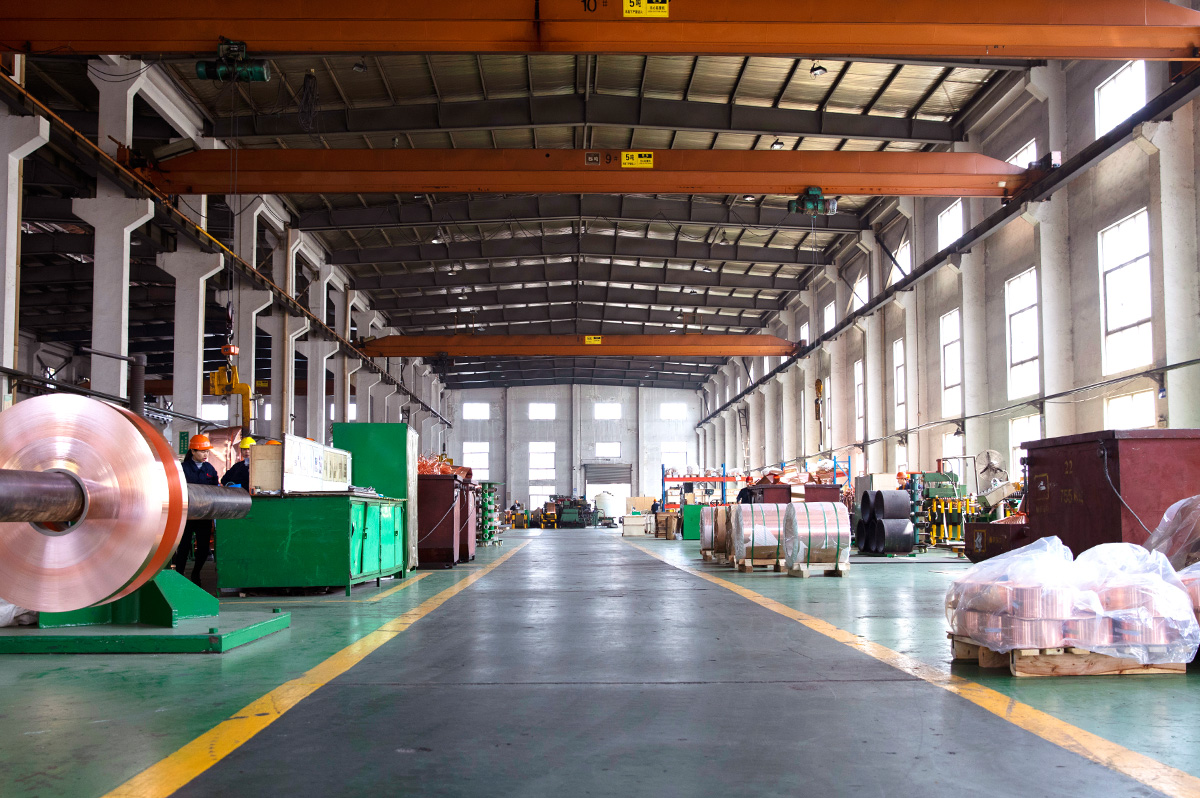

1. Cold rolled copper strip
(1) Plastic deformation.
(2) The pressure in the roll gap area is high, and there is a pressure distribution, up to 2700MPa.
(3) There are friction forces along the rolling direction and the reverse rolling direction at the same time.
(4) The instantaneous temperature of the roll gap is high, up to 200~300℃.
(5) The scrolling and sliding states coexist.
2. Hot rolled copper strip
Advantages of hot rolled copper strip:
(1) Hot rolling can significantly reduce energy consumption and reduce costs. During hot rolling, the metal has high plasticity and low deformation resistance, which greatly reduces the energy consumption of hot-rolled metal deformation.
(2) Hot rolling can improve the processing performance of metals and alloys, that is, the coarse grains in the as-cast state are broken, the cracks are healed significantly, the casting defects are reduced or eliminated, the as-cast structure is transformed into a deformed structure, and the processing performance of the alloy is improved.
(3) Hot rolling usually uses large ingots and large reduction rolling, which not only improves the production efficiency, but also creates conditions for increasing the rolling speed and realizing the continuity and automation of the rolling process.

Disadvantages of hot rolled copper strip:
(1) After hot rolling, the non-metallic inclusions (mainly sulfides and oxides, as well as silicates) inside the metal are pressed into thin sheets, and delamination (interlayer) occurs. Delamination greatly deteriorates the tensile properties of the metal in the thickness direction, and it is possible that interlayer tearing may occur when the weld shrinks. The local strain induced by weld shrinkage often reaches several times the yield point strain, which is much larger than the strain caused by the load.
(2) Residual stress caused by uneven cooling. Residual stress is the internal self-balanced stress without external force. Hot-rolled steel sections of various cross-sections have such residual stresses. Generally, the larger the section size of the steel section, the larger the residual stress. Although the residual stress is self-balanced, it still has a certain influence on the performance of the metal under the action of external force. For example, it may have adverse effects on deformation, stability, and fatigue resistance.
(3) Hot rolling cannot control the required mechanical properties of the product very accurately, and the structure and properties of the hot rolled product cannot be uniform. Its strength index is lower than cold work hardened products, but higher than fully annealed products; plasticity index is higher than cold work hardened products, but lower than fully annealed products.
(4) The thickness of hot-rolled products is difficult to control, and the control accuracy is relatively poor; the surface of hot-rolled products is rougher than that of cold-rolled products, and the Ra value is generally 0.5 to 1.5 μm. Therefore, hot rolled products are generally used as billets for cold rolling.